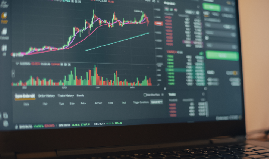Advanced Market Analysis Techniques
Professional market analysis goes beyond basic chart reading and incorporates sophisticated methodologies that institutional traders use daily. Advanced technical analysis includes Elliott Wave Theory, Fibonacci retracements, harmonic patterns, and multi-timeframe analysis. These techniques help identify high-probability trading opportunities and provide deeper insights into market structure and potential price movements.
Quantitative analysis has become increasingly important in modern trading, utilizing statistical models, backtesting strategies, and algorithmic approaches to identify market inefficiencies. Professional traders often employ multiple analytical frameworks simultaneously, cross-referencing signals from different methodologies to increase the accuracy of their trading decisions. Understanding market microstructure, order flow analysis, and institutional trading patterns provides additional edges in competitive markets.
Successful traders also monitor economic indicators, central bank policies, geopolitical events, and sector-specific news that can impact asset prices. This comprehensive approach to market analysis helps traders anticipate market movements and position themselves advantageously before major price shifts occur. The integration of artificial intelligence and machine learning tools is revolutionizing how traders analyze vast amounts of market data and identify profitable opportunities.




